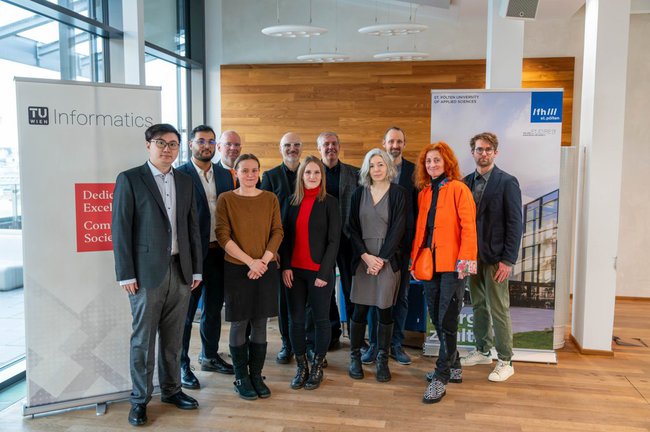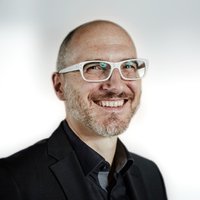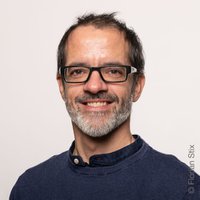New PhD Programme Launched with TU Wien
TU Wien and St. Pölten UAS Offer Joint PhD Programme on Cultural Heritage and Digital Technologies

For the first time, the St. Pölten University of Applied Sciences and the TU Wien have joined forces to offer a PhD programme together. The programme is dedicated to using digital technologies in the preservation of cultural heritage: historical photographs and amateur films are digitalised and analysed. The PhD has now officially started at TU Wien.
Preserving Cultural Heritage to Benefit Society
The research programme “Visual Heritage” aims to carry out research to explore the potential of using digital technologies to preserve cultural heritage. “We have to understand history to build a future. Making history accessible through innovative technologies is at the core of this interdisciplinary PhD programme. We are proud that we not only bring about the next generation of experts but also actively shape the future of the digital cultural heritage preservation”, says Gerti Kappel, dean of the faculty of Informatics of TU Wien.
“It is of great benefit to society if we can use digital technologies to analyse visual media such as historical photography and amateur films, combine those analyses with the knowledge of experts, and gain valuable insights”, explains Wolfgang Aigner, programme coordinator of the St. Pölten UAS. His co-coordinator at TU Wien Silvia Miksch heads the research unit Visual Analytics at the Institute for Visual Computing and Human-Centered Technology.
Science without Borders
Jens Schneider, rector of TU Wien: “There are no borders in science. Very often big innovations emerge at the interface of different disciplines. Vienna, in particular, is a great location for computer science to meet cultural heritage preservation. This project has the potential to act as a real time machine that allows people to delve into the past. This is a vital experience: If we want to decide where to go, we need to know where we are coming from. We are proud that thanks to the programme “docs funds connect” and together with our partner at the St. Pölten UAS, our internationally renowned faculty could gather a group of top-level researchers to work in this future-oriented field. I am already looking forward to the results.”
The Power of Big Data
Thomas Aigner, Vice President of the Time Machine Organization, held the keynote. Speaking on the topic of “The Power of the Past’s Big Data”, the historian and archivist described the revolutionary transformation of cultural heritage and emphasised the importance of open data. He emphasised the significance to collectively strive to exploit the remarkable technological possibilities of preserving digital heritage and making it available to the public.
PhD Programme Partly Offered in Lower Austria
The programme has five PhD positions, four of which have already been filled by Tingyu Lin, Nidham Tekaya, Michaela Tuscher and Markus Passecker.
“This is the first time that such a substantial part of a PhD programme can be completed in Lower Austria. We very much look forward to this joint PhD programme, which will allow researchers to work in depth at the interface of fundamental and applied research”, says Hannes Raffaseder, the St. Pölten UAS’ Chief Executive Officer.
“For our employees and lecturers, PhD programmes play an important role in ensuring academic quality. After all, the core mission of a university of applied sciences involves research-based teaching as much as practical orientation”, says head of the UAS board Alois Frotschnig.
Analysing and Presenting Digitalised Visual Media
It is essential to have methods that allow us to combine expert knowledge with efficiently automated data analyses to document the contents of visual media and achieve new results. Visual heritage explores automated image analysis methods and visualisation to exploit historical media collections and make them available to a broad user group.
“The interdisciplinary approach involving computer sciences, humanities and social sciences is key here. In the past, the St. Pölten University of Applied Sciences has already conducted numerous prestigious interdisciplinary research projects with various cooperation partners”, says Wolfgang Aigner.
Funding Scheme for Joint PhD Programmes
In partnership with the CDG (Christian Doppler Research Association), the Visual Heritage programme is funded by doc.funds.connect of the FWF (Austrian Science Fund). The funding scheme aims to establish joint higher education programmes by universities and universities of applied sciences. The funding for Visual Heritage amounts to a million euros.
Pioneering Institute
At the St. Pölten UAS, the programme is integrated into the Institute of Creative\Media/Technologies – one of the largest research institutes in the Austrian universities of applied sciences sector. Roughly 20 researchers and 12 student employees work in approx. 80 research projects. The institute currently employs four habilitated researchers.
In the past five years, ten researchers worked in research projects at the institute. They each had habilitated supervisors who worked full-time at the St. Pölten UAS, but they could only earn their PhD at a university. For the St. Pölten UAS, the new PhD programmes opens up new possibilities in the supervision of PhD students.
doc.funds.connect Programme
With a funding amount of 4 million euros, the doc.funds.connect scheme enables the establishment of PhD programmes. The FWF funds a total of four new programmes, thereby creating 20 new PhD position.

FH-Prof. Priv.-Doz. Dipl.-Ing. Dr. Wolfgang Aigner , MSc
Deputy Head of Faculty of Engineering and Business